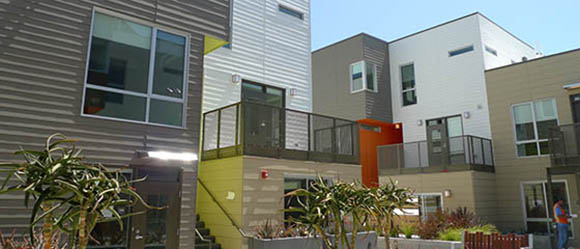
(Photo credit: Mark Hogan/Flickr)
California’s housing shortage has been picking up steam as a political and economic issue. The California Economic Summit targeted the issue in 2015. With supply falling far below demand, California needs to build at least one million more homes for low and middle-income Californians in the next ten years.
State resources are constrained and communities face numerous obstacles to building more homes close to jobs. Those “obstacles” include uncertainty around infrastructure financing to lengthy approval processes. The Summit is leading a comprehensive effort aimed at reducing costs and increasing the supply of housing for Californians.
From across the state, voices are being raised that something needs to be done.
Ray Pearl opined in a Capitol Weekly op-ed that the state needs to turn its attention to the housing issue. He said the housing shortage is hurting the state’s economy.
For instance, Pearl writes, “When Toyota announced last year that it would move its headquarters out of Torrance, California, some blamed our state’s taxes and regulation. But newer reports show a different culprit. ‘It was really about affordable housing,’ said insider Albert Niemi, dean of the Cox School of Business at Southern Methodist University. Toyota’s departure – along with 3,000 workers and their spending power – is another wake-up call that we can no longer ignore California’s housing crisis.”
“Unfortunately,” Pearl added, “even though business leaders including the Orange County Business Council and the Silicon Valley Leadership Group have been sounding the alarm bells for years — naming workforce housing affordability as a major threat to the state’s economy – action has been hard to come by.
For Christopher Thornberg of Beacon Economics, the housing shortage is “a middle class crisis in California”. Writing in the San Diego Union Tribune, Thornberg said that 53 percent of California middle-class households are using more than 30 percent of their income to cover rent. Ten years ago, it was 38 percent.
Here’s more from Thornberg:
“It is even worse for those who have borrowed to buy a home — over two-thirds of middle-class households with a mortgage are cost-burdened in California — compared to 40 percent in the nation overall.”
“What’s driving this housing crisis? It’s a classic problem of supply and demand. The state doesn’t build enough housing to accommodate its population growth. California is home to roughly 13 percent of the nation’s population, and has slightly greater than average population growth. Yet, over the last 20 years the state has accounted for only 8 percent of all national building permits.”
Another sign that the housing issue is gaining momentum in California is political writers are beginning to chime in. Dan Walters of the Sacramento Bee wrote on what he called “the state’s serious and worsening housing shortage.”
Walters writes that housing costs are, according to the Census Bureau and the Public Policy Institute of California, the major factor in the state having the nation’s highest level of functional poverty. He added that California has the dubious distinction of having four of the nation’s top ten most expensive rental markets.
Governor Brown did not mention housing in the State of the State address last week, and while he has not explicitly ruled out addressing the issue in the next three years, he did rule out his support for any new programs.
Assemblymember David Chiu of San Francisco is the new Chair of the Assembly Housing and Community Development Committee. He is a long-time supporter of affordable housing, which of course is a huge issue in his home city. He and outgoing Speaker Toni Atkins have been promoting the need for more housing.
Earlier in January, a group of State Senators proposed spending $2 billion to build or rehabilitation permanent housing to address the state’s large homeless population, estimated at 116,000 people.
With fewer than one in three families able to afford a median-priced home in California—and with soaring rents making it harder than ever to find a place to live—the California Economic Summit will seek to build a coalition that can help more communities increase the supply, and reduce the price, of the homes California’s growing population needs to prosper.
After years of efforts to replace redevelopment funds, expand state housing tax credits, and create a dedicated source of revenue for affordable housing, it is becoming clear that a comprehensive effort will be necessary to close the state’s growing “housing gap”—a plan that expands resources for subsidized affordable housing, while also increasing production of market-rate housing near transit and jobs.
So how to do address this vexing and expensive problem?
The California Economic Summit released its 2016 Roadmap to Shared Prosperity highlighting a set of ambitious goals—the One Million Challenges—that will be vital to expanding sustainable economic growth in every part of California.

